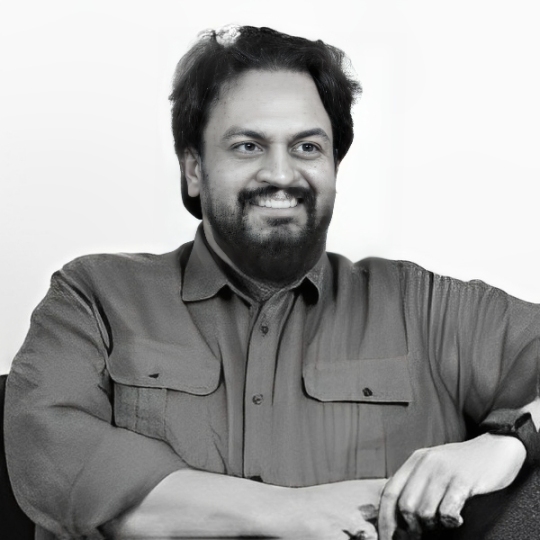
Grigory Alekseev is a highly skilled back-end developer specializing in Java and Scala, with extensive experience in fintech and information security. He has successfully delivered complex, high-performance systems, including spearheading the integration of SEPA Instant Credit Transfer at Revolut, enabling instant money transfers for over 300K customers.
There is a fundamental change taking place in the European payments landscape. SEPA Instant Credit Transfer (SCT Inst) has changed from being an optional feature to a crucial part of the banking infrastructure as 2025 draws near. Working with various financial institutions during their instant payments journey, I have witnessed how this shift is changing the paradigm for banking services as a whole, not just payment processing.
Why SEPA Instant Is a Game-Changer for Banks
The appeal of SEPA Instant extends far beyond just facilitating quicker payments. The 10-second settlement window is impressive, but what’s really changed is how this capability is changing the competitive landscape and customer expectations in European banking.
Batch-processed traditional SEPA credit transfers are a thing of the past. Customers of today demand the same immediacy from their financial transactions because they are used to instant messaging and real-time notifications. SEPA Instant allows banks to provide services that were previously unattainable, such as real-time marketplace settlements and instant loan disbursements, by delivering payments in less than 10 seconds.
Perhaps more revolutionary than speed is availability. SEPA Instant is open 24/7. Because of this, banks are now able to provide genuinely continuous services, catering to the gig economy, global trade, and evolving lifestyles where financial demands don’t adhere to regular banking hours. This greatly increases customer retention and satisfaction while generating new revenue streams for banks.
The Challenges: Navigating the Real-Time Reality
SEPA Instant integration has advantages, but it also has drawbacks that call for careful preparation and implementation.
Real-time processing has significant technical requirements. Instant payments necessitate quick decision-making skills, in contrast to batch processing, where mistakes can be fixed overnight. To manage high-frequency, low-latency transactions while upholding the same reliability standards as conventional payments, banks must modernize their core systems. This frequently entails restoring the core infrastructure that banks have relied on for many years.
SEPA Instant operates under strict regulatory frameworks, such as the updated Payment Services Directive (PSD2) and several anti-money laundering (AML) regulations. In order to maintain thorough audit trails, banks must make sure their systems can conduct compliance checks within the allotted 10-second window. When taking into account the various regulatory interpretations among EU member states, the difficulty increases.
Predictable batch processing windows are the lifeblood of traditional liquidity management. As SEPA Instant allows money to flow around the clock, banks must essentially rethink their cash management strategies. Since the traditional end-of-day balancing is no longer adequate to achieve accurate financial reporting and risk management, real-time reconciliation becomes essential.
Even well-designed systems can be stressed by high transaction volumes. Banks must design their systems to withstand unexpected spikes (think Black Friday sales or emergencies) without sacrificing security or performance. This calls for thorough capacity planning, stress testing, and reliable technology.
The smooth integration of several systems, including payment processors, fraud detection systems, third-party service providers, and core banking platforms, is essential to SEPA Instant success. One of the biggest architectural challenges is making sure these systems function well together in real time.
SEPA Instant’s speed, which draws users in, also opens up new avenues for fraud. Conventional fraud detection systems may have trouble making decisions in real time because they are made for batch processing. Because instant payments are irreversible, it is very difficult to recover from a fraudulent transaction once it has been authorized.
Solutions and Best Practices: Building for the Real-Time Future
Successful SEPA Instant integration requires a multi-faceted approach combining technology innovation, process redesign, and strategic partnerships.
Modern fraud prevention for instant payments employs a sophisticated multi-tier approach that balances speed with security. The first tier provides immediate risk assessment, categorizing incoming payments as green (low risk), yellow (medium risk), or red (high risk) within milliseconds. This rapid initial screening allows banks to approve low-risk transactions instantly while adhering to the SEPA Instant protocol requirements.
In order to process yellow-category payments, the second tier conducts more in-depth analysis concurrently with payment processing. Even though the payment may have already been made, this more thorough examination may lead to post-settlement procedures like account monitoring, further verification requests, or, in the worst situations, fund freezing while an investigation is conducted. This strategy maintains strong fraud protection without sacrificing the customer experience.
Transactions that are red-flagged are instantly rejected, and the system gives the sending bank the relevant reason codes. These classifications are constantly improved by machine learning algorithms based on consumer behavior, transaction patterns, and new fraud trends.
Real-time payments are simply too fast for manual processes. End-to-end automation is being used by banks for routine tasks like handling exceptions and onboarding new customers. This includes intelligent routing based on transaction characteristics, real-time limit management, and automated compliance checking.
In the context of instant payments, handling exceptions becomes especially important. Banks are creating intelligent escalation systems that can swiftly route complex cases to human operators with all pertinent context pre-populated, while also making decisions on their own for common scenarios.
Successful banks are establishing strategic alliances with fintech firms, payment processors, and technology vendors rather than developing all of their capabilities internally. In addition to offering access to specialized knowledge in fields like fraud detection, regulatory compliance, or customer experience design, these collaborations can shorten time-to-market.
Many banks are also participating in instant payment schemes and industry initiatives that promote standardization and interoperability, reducing individual implementation burdens while ensuring broader ecosystem compatibility.
The Long-Term Outlook: Beyond Basic Instant Payments
SEPA Instant is only the start of a larger financial services revolution. Next-generation banking services are built on the infrastructure and capabilities created for instant payments.
Request-to-Pay services, which allow companies to send payment requests that clients can immediately approve, are made possible by the real-time infrastructure. By removing the hassle of conventional payment initiation procedures, this capability is revolutionizing business-to-business payments, subscription services, and e-commerce.
Cross-border instant payments are on the horizon, with initiatives to connect SEPA Instant with similar systems in other regions. The best-positioned banks to take advantage of this growing market will be those that have mastered domestic instant payments.
The embedded finance trend, which involves integrating financial services directly into non-financial applications, is well suited to SEPA Instant’s API-driven architecture. Banks can provide mobile applications, accounting software, and e-commerce platforms with instant payment capabilities, generating new revenue streams and strengthening client relationships.
As central bank digital currencies (CBDCs) move from concept to reality, the infrastructure developed for SEPA Instant provides a natural foundation for CBDC integration. Banks with mature real-time payment capabilities will be better positioned to participate in the digital currency ecosystem as it evolves.
The competitive landscape is clear: institutions that delay SEPA Instant integration risk falling behind in the customer experience race. Early adopters are already using instant payment capabilities to differentiate their services, attract new customers, and enter new markets.


